Undercuts and Fades: The Ultimate Guide to Short Sides | 2025 Haircut Trends
The Enduring Appeal of Short Sides: An Introduction to Undercuts and Fades
The world of men's hairstyling is vast and ever-evolving, but few styles have demonstrated the staying power and versatility of haircuts with short sides. From sharp, military-inspired looks to textured, contemporary styles, the foundation often lies in two key techniques: the undercut and the fade. These methods of cutting the hair on the sides and back of the head create a clean, sharp silhouette that provides the perfect canvas for a variety of styles on top. Whether you're a seasoned style enthusiast or just beginning to explore your grooming options, understanding the nuances of undercuts and fades is essential for achieving a polished, modern look.

This guide is designed to be your ultimate resource for navigating the world of short-sided haircuts. We will deconstruct the fundamental differences between an undercut and a fade, explore the vast array of variations within each category, and provide expert advice on choosing the perfect style for your face shape and lifestyle. We'll also delve into the essential styling products and techniques needed to maintain your look at home, and offer professional tips on how to keep your cut looking fresh between salon visits. Get ready to master the art of short sides and find the haircut that defines your personal style.
Undercut vs. Fade: Decoding the Core Differences
While often used interchangeably, "undercut" and "fade" refer to two distinct techniques that yield different results. Understanding this distinction is the first step in communicating effectively with your stylist and getting the exact haircut you envision. The primary difference lies in how the shorter hair on the sides transitions to the longer hair on top. An undercut is defined by its sharp disconnection, while a fade is all about a seamless, gradual transition.
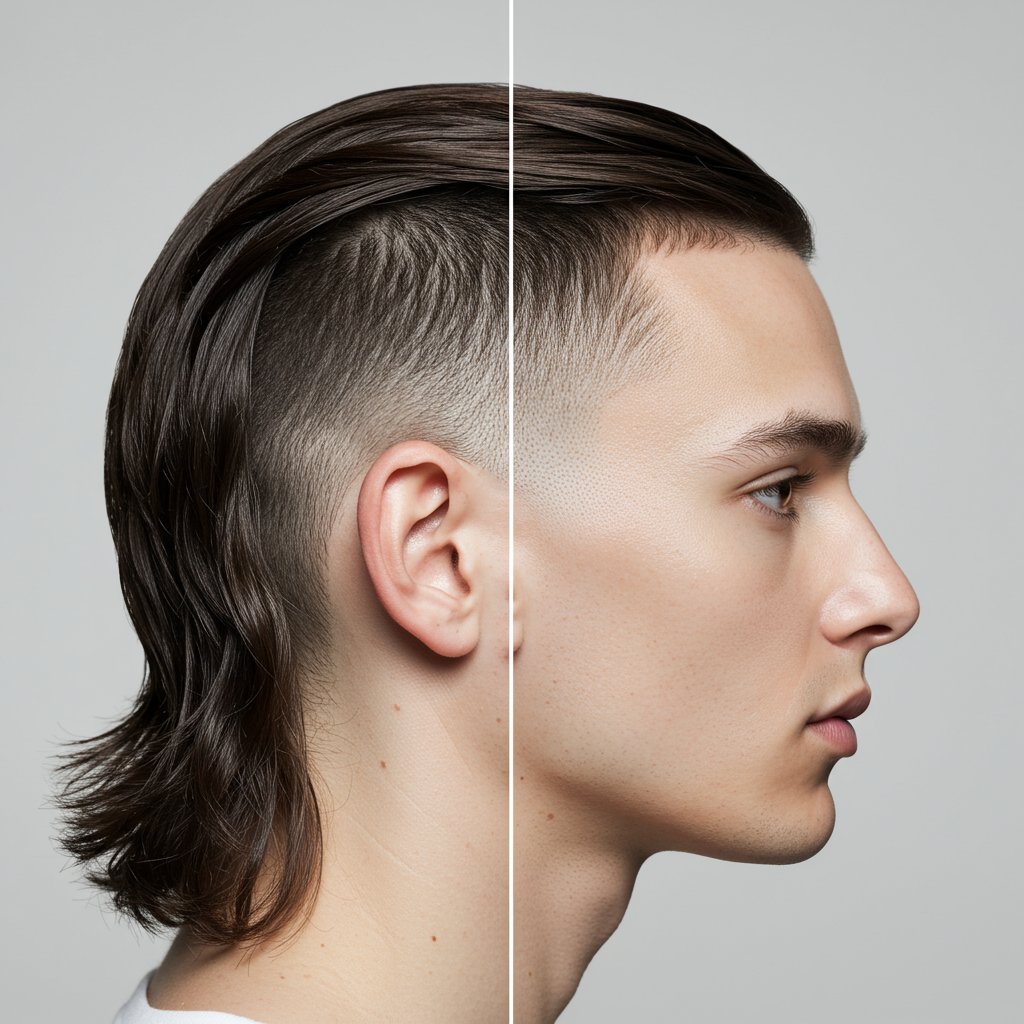
The Undercut: A Story of Disconnection
An undercut is characterized by a stark contrast between the hair on the sides and the hair on top. The sides and back are clipped to one uniform short length, creating a clear, disconnected line where the longer top section begins. There is no gradual blending or tapering. This creates a bold, statement look that can range from subtly edgy to dramatically high-fashion, depending on the length of the hair on top and how it's styled. The disconnected undercut is a powerful choice that emphasizes the volume and texture of the hair on top, making it a focal point of the style.The Fade: The Art of the Seamless Blend
A fade, on the other hand, is a masterpiece of precision and blending. It's a type of taper that gradually shortens the hair down the sides and back of the head. The length transitions smoothly, often starting longer near the top and getting progressively shorter until it blends with the skin at the neckline or sideburns. This graduation of length is what defines the fade. It's a cleaner, more integrated look than the undercut and offers incredible versatility through its many variations, from low and subtle to high and dramatic. Fades are prized for their clean lines and sharp finish, offering a polished look that grows out gracefully.The Anatomy of a Fade: A Spectrum of Styles
Not all fades are created equal. The beauty of this technique lies in its adaptability, with the starting point of the blend—the fade line—determining the overall look and feel of the haircut. An experienced stylist can customize the fade to complement your head shape and desired style. Here are the most popular types of fades you should know.
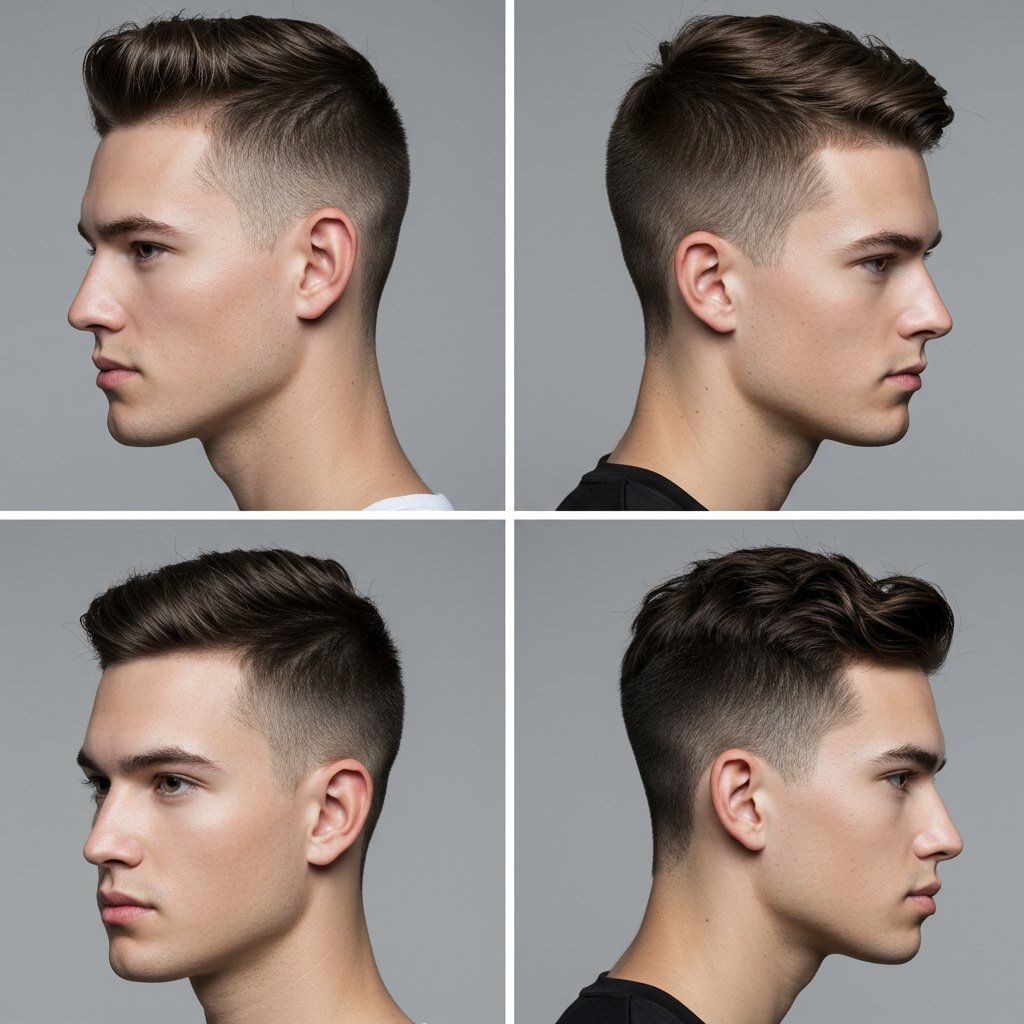
The Low Fade
The low fade begins just above the ears and follows the natural hairline down to the nape of the neck. It's the most subtle and conservative option, offering a clean, tidy finish without being overly dramatic. This fade is perfect for professional settings or for those trying a fade for the first time. It works exceptionally well with longer styles on top, like a pompadour or a textured quiff, as it keeps the focus on the volume and shape of the top section while maintaining a neat perimeter.The Mid Fade
As the name suggests, the mid fade starts at a point halfway up the sides of the head, typically around the temples. This is arguably the most popular and versatile type of fade. It offers a noticeable and stylish contrast that is more pronounced than a low fade but less severe than a high fade. A mid fade strikes a perfect balance, providing a clean-cut appearance that works with almost any hairstyle on top, from a classic side part to a modern crop top.The High Fade
For a bold and high-contrast look, the high fade is the go-to choice. The fade line starts high on the head, near the parietal ridge (the point where the top of the head begins to curve downwards). This technique exposes more of the scalp, creating a sharp, edgy look that draws significant attention. High fades are often paired with very short styles like a buzz cut or a tight crop, but they can also create a dramatic foundation for voluminous styles like a high pompadour or afro textures.The Skin/Bald Fade
A skin fade, also known as a bald fade, is any fade (low, mid, or high) that tapers all the way down to the bare skin. Instead of leaving a short stubble at the bottom, the stylist uses a foil shaver or a straight razor to achieve a perfectly smooth finish. This creates the sharpest possible contrast and an exceptionally clean look. Skin fades require more frequent maintenance to keep them looking crisp, but the ultra-sharp result is often worth the upkeep.Exploring the Undercut: Versatility Through Disconnection
The undercut's signature disconnection provides a blank canvas that can be adapted to a multitude of styles. The magic happens in the contrast between the uniformly short sides and the length and styling of the hair on top. This versatility allows the undercut to be tailored to fit any aesthetic, from vintage-inspired classics to avant-garde modern looks.

The Classic Slicked-Back Undercut
This is a timeless and sophisticated take on the style. The sides are clipped short, while the top is left long enough (typically 4-6 inches) to be slicked back with a medium-to-high shine pomade. The look is reminiscent of 1920s and 30s fashion but has been modernized for today's gentleman. It's a powerful, confident style that works well in both formal and casual settings. The key is the clean disconnection, which makes the slicked-back top appear even more defined and intentional.The Disconnected Pompadour
Pairing an undercut with a pompadour creates a truly dramatic and voluminous style. The short, buzzed sides make the height and shape of the pompadour on top the undeniable star of the show. Without the gradual blend of a fade, the pompadour appears to sit on top of the head, creating a striking silhouette. This style requires a good blow-dryer technique and a strong-hold product to maintain its height and structure throughout the day.The Side-Swept Undercut
A more relaxed and approachable version of the style, the side-swept undercut features longer hair on top that is styled over to one side. This can create an asymmetrical look that adds movement and texture. It's less severe than a slicked-back style and offers a softer, more casual vibe. This variation works well with various hair types and can be styled neatly for a professional look or left messy and textured for a more laid-back feel.Finding Your Perfect Match: Choosing a Cut for Your Face Shape
A great haircut is one that balances and complements your facial features. While personal preference is paramount, understanding how different undercuts and fades work with various face shapes can help you and your stylist choose the most flattering option.
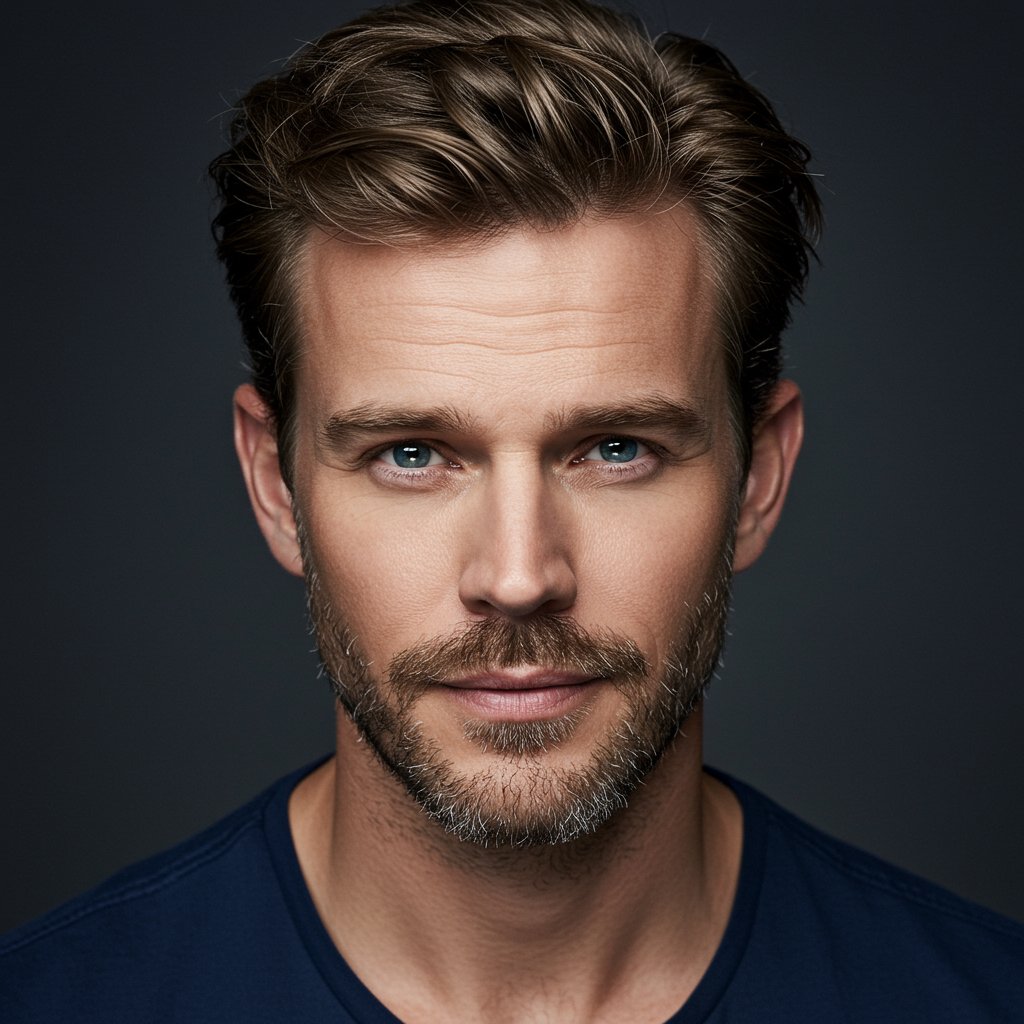
Oval Face Shape
Considered the ideal face shape due to its balanced proportions, an oval face can pull off almost any undercut or fade. The key is to avoid styles that add too much height on top, which could elongate the face unnecessarily. A mid fade with a textured quiff or a classic side-part undercut are excellent, well-balanced choices.Round Face Shape
The goal for a round face is to create angles and add height to create the illusion of a more defined facial structure. High fades and disconnected undercuts are perfect for this. By keeping the sides extremely short and creating volume and height on top (think pompadours, quiffs, or spiky texture), you can visually lengthen the face and add sharpness.Square Face Shape
A square face is characterized by a strong jawline and angular features. The best haircuts soften these angles without hiding them. A low or mid fade can soften the sides, while a slightly softer, textured style on top (like a messy crop or a side-swept look) can balance the strong jaw. Avoid overly geometric or boxy cuts that can make the face appear too rigid.Heart Face Shape
With a wider forehead and a narrower chin, a heart-shaped face benefits from styles that add bulk to the sides and avoid excessive height. Mid-length styles on top, such as a textured side part or a fringe, work well. A mid-fade is a good choice as it doesn't remove too much weight from the sides, helping to create a more balanced silhouette compared to a high fade.Styling and Products: Mastering Your Look at Home
Getting a great haircut is only half the battle; knowing how to style it at home is what truly makes it your own. The right products and techniques will help you recreate that fresh-from-the-salon look every day.

The Essential Product Arsenal
- Pomade: Perfect for slicked-back styles and pompadours. Water-based pomades offer a strong hold and wash out easily, while oil-based versions provide a classic shine and reworkable hold.
- Clay: For a matte finish and strong, pliable hold. Hair clay is excellent for creating texture and volume in shorter, messier styles without any shine.
- Wax: Offers a medium hold and a low-to-medium shine. Wax is great for defining pieces and controlling frizz, making it suitable for a wide range of styles.
- Sea Salt Spray: Your secret weapon for texture and volume. Use it as a pre-styler on damp hair before blow-drying to create a natural, beachy texture and give your hair a foundational lift.
Pro Styling Techniques
The blow-dryer is your most important tool. To create volume for a pompadour or quiff, blow-dry your hair in the opposite direction it will eventually lay, using a brush to lift the roots. Once almost dry, direct it into its final shape and finish with a blast of cool air to lock it in place. For textured looks, use your fingers to scrunch and twist the hair while blow-drying, and apply a matte product like clay to finish. Always start with a small amount of product and add more as needed—it's easier to add than to take away.Maintenance and Upkeep: Keeping Your Cut Sharp
The sharp lines of an undercut or fade look best when they are fresh. Due to the short length on the sides, regrowth becomes noticeable relatively quickly. To keep your haircut in optimal condition, regular maintenance is key.
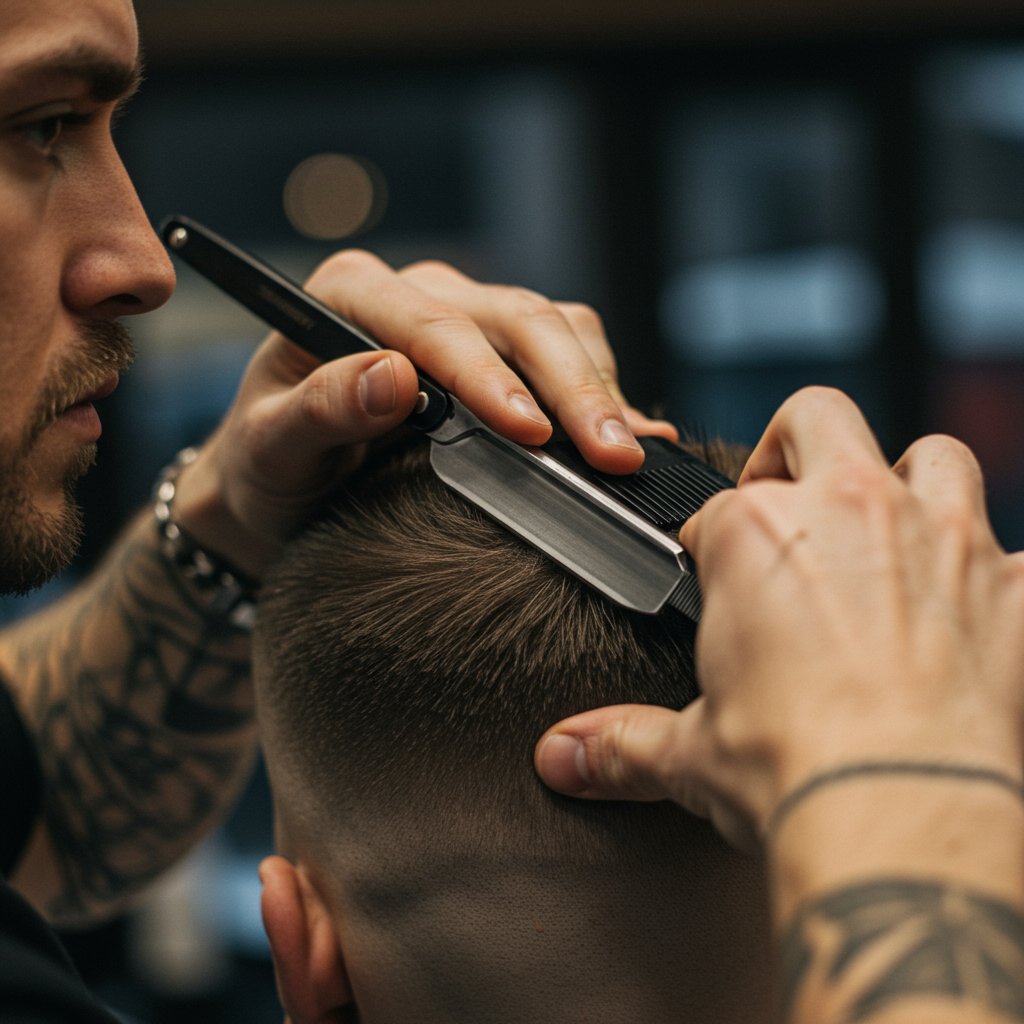
For a skin fade or a very short high fade, you'll likely need a touch-up every 1-2 weeks to maintain that ultra-clean look. Mid and low fades, as well as most undercuts, are a bit more forgiving and can typically go 2-4 weeks between appointments. In addition to regular trims, proper at-home care is crucial. Use a quality shampoo and conditioner to keep your hair and scalp healthy. A healthy scalp is the foundation for great hair, so consider using a scalp scrub or treatment occasionally to remove product buildup and dead skin cells, especially if you use heavy styling products.
Frequently Asked Questions (FAQ)
Q1: What's the difference between a taper and a fade?
A taper and a fade are similar but not identical. All fades are tapers, but not all tapers are fades. A classic taper leaves more noticeable length on the sides (e.g., tapering from a #2 guard down to a #1). A fade is a more specific, often shorter type of taper that blends down to the skin or very short stubble, creating a more dramatic, 'faded' effect.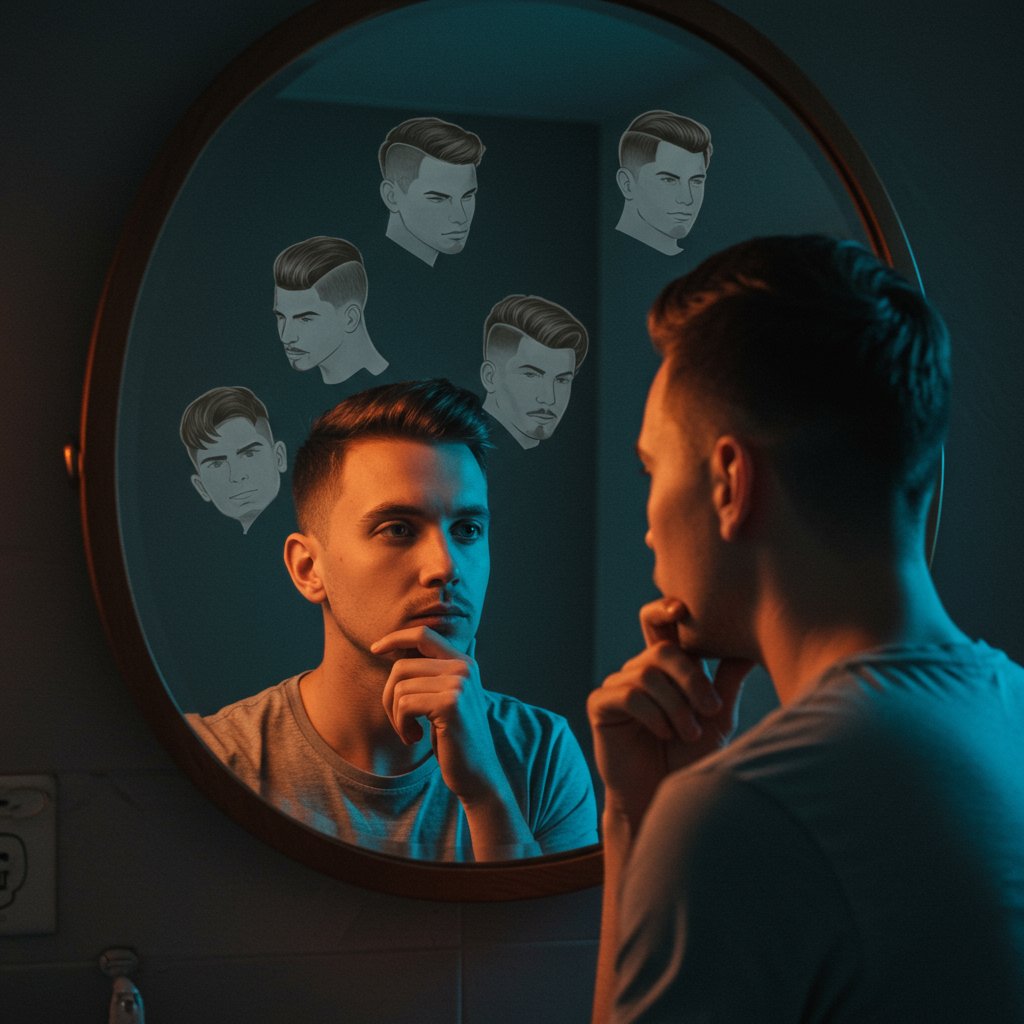
Q2: How long does my hair need to be for an undercut?
For a noticeable disconnected undercut, you'll want at least 3-4 inches of length on top. This provides enough hair to create a distinct style, like a slick-back or a side part, that contrasts sharply with the buzzed sides. However, undercuts can be adapted for shorter hair on top as well, such as with a textured crop.Q3: Can a fade or undercut work with thinning hair or a receding hairline?
Yes, absolutely. A skilled stylist can use a fade to make thinning hair appear fuller. By taking the sides down very short with a skin fade, the contrast makes the hair on top look denser. For a receding hairline, a style like a textured crop top with a mid fade can draw attention away from the hairline and towards the texture on top.Q4: How do I ask my barber or stylist for a fade?
Be specific. Don't just say "a fade." Instead, specify where you want the fade to start (low, mid, or high) and how short you want it to go at the bottom (e.g., "down to the skin," "a zero," or "a number 1 guard"). Bringing reference photos is the single best way to ensure you and your stylist are on the same page.Q5: Is an undercut or a fade higher maintenance?
Generally, a fade, especially a skin fade, is higher maintenance. The seamless blend shows regrowth very quickly, requiring touch-ups every 1-2 weeks. An undercut can be slightly more forgiving, as the single-length sides grow out more uniformly, potentially allowing you to go 2-4 weeks between cuts.Conclusion: Defining Your Style with Precision
Undercuts and fades are more than just haircuts; they are a statement of personal style, precision, and confidence. From the subtle elegance of a low fade to the bold declaration of a disconnected undercut, these techniques offer a world of possibilities for tailoring a look that is uniquely yours. By understanding the fundamental differences, exploring the vast array of styles, and choosing a cut that complements your features, you can elevate your grooming game to new heights.
Ultimately, the perfect haircut is a collaboration between you and a skilled professional. Clear communication, armed with the knowledge from this guide, will empower you to achieve the sharp, polished, and stylish look you desire. Embrace the clean lines, appreciate the artistry of the blend, and wear your new cut with the confidence it deserves.


